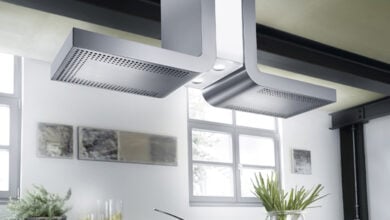How to create the perfect walk-in wardrobe

Walk-in wardrobes are often associated with luxury homes that have a lot of spare space. However, repurposing a room to create your dream wardrobe is actually more accessible than you might think, and can help you improve your home’s storage. It’s no surprise then that walk-in wardrobes are highly coveted, ranking in the top 20 home improvement projects homeowners are planning this year.
There are plenty of places you could get a walk-in wardrobe built in your home. From creating a subsection in your master bedroom to full-room and loft walk-in wardrobes, an expert carpenter can help you find the perfect spot in your home to build your new bespoke wardrobe.

There are a few questions you should ask yourself before you commission your new walk-in wardrobe:
How much space do I need for a walk-in wardrobe?
A basic walk-in wardrobe needs at least 2.5 metres by 1.5 of space. For a really small walk-in, we recommend you only use one wall, as two rows that are too close together can make it hard to see all your clothes properly. L-shaped open wardrobes are also a good idea for smaller spaces. Open wardrobes without individual doors are a better choice for narrow rooms, as are sliding wardrobes with doors that slide open and don’t take up space.
Larger walk-in wardrobes can act as both clothes storage and a dressing room, with the potential of adding a central island, a dressing table, or even an armchair. Larger rooms also have space for shoe racks and a section for accessories and handbags, so determine how much space you have first, and then begin planning what you want your walk-in wardrobe to look like.
When planning how much space you’ll need, always try and add an extra 20%, in order to accommodate for the new clothes you may go on to buy in the future.

What is the best way to organise a walk-in wardrobe?
In order to personalise your new wardrobe, you first have to organise your clothes. The layout of your cabinetry will be determined by your personal needs, such as whether or not you own lots of floor length dresses and coats, and how many drawers versus hangers you’ll need. Understanding your wardrobe will allow you to customise it as effectively as possible according to your lifestyle and needs.
Taking inventory of what you own, calculate how many single-hang sections you’ll need (for dresses and coats), and how much double-hang space (for jumpers and shirts) you want. If you want to incorporate a shoe rack, count up how many pairs of shoes you own – or how many you use frequently and need quick access to – and incorporate that number into your wardrobe’s design too. Prioritise hanging rails over drawers, which can be added elsewhere in your house to keep your clothes neat and out of sight.
By organising your wardrobe beforehand – and decluttering what you no longer need – you’ll be able to tailor your new walk-in wardrobe to your exact needs.

How do I maximise my walk-in wardrobe?
Regardless of how big or small your available space is, making the most of what you have to fit as much extra storage as possible is a must.
- If your ceiling is high enough, consider adding an extra layer of closed storage above your wardrobe to get rid of redundant space. You can use this to store items you don’t use very often, as well as items you want to keep out of sight. For small rooms, the key is to maximise vertical space rather than using up floor area. Floor to ceiling cabinets are the best way to achieve this.
- Pull-out shoe racks are also a good idea because they allow you to stow several pairs of shoes in a small space. They also enable you to keep your shoes stored separately from your clothes, which is more hygienic.
- Depending on the layout of your walk-in wardrobe, you may find that corners are causing you to lose out on available space. Corner shelves enable you to make use of that ‘lost’ space, and can be used to store things you don’t use often, like suitcases. Or consider installing wardrobe rails that go all the way around the corners of your closet, as these will also allow you to create more space.
- Lastly, full length mirrors are a must to help you pick the perfect outfit. They’re also great at creating the illusion of space. If you don’t have room for a mirror, consider adding mirrored doors to your wardrobes instead.

How much does it cost to build a walk-in wardrobe?
The average cost of a professionally built walk-in wardrobe is around £8,000 though prices vary widely depending on size, quality of materials, and where you live in the UK (cost of labour rises by up to 20% more in London and the Southeast). This means you could spend anywhere from £4,500 to £12,500, or even more if you’re thinking luxury!
DIY projects could cost you even less, starting at around £1,500 to anywhere from £3,000 or more. This does require you to have some handy interior design and carpentry skills though. If you’d rather leave the building to the experts, speak to a skilled carpenter today to get started on your project.

From large, dressing room style walk-ins to smaller options for smaller homes, walk-in wardrobes aren’t just for glamorous properties with loads of spare bedrooms. Now more than ever homeowners are looking to repurpose areas of their homes, with walk-in wardrobes quickly becoming the perfect storage solution to make the most of unused spaces.
Bespoke, highly customisable options are available to fit your every need, but you can also buy flat-pack or DIY options too, depending on your budget.
Thinking of getting a custom walk-in wardrobe installed? Speak to a skilled carpenter today.



